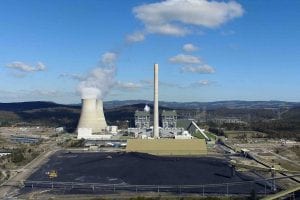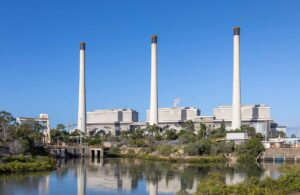Australia’s ageing coal fired generators could be paid to remain open in an effort to prevent their early closure under energy market reforms proposed by the Energy Security Board (ESB).
The ESB released its detailed reform ‘options’ for the National Electricity Market on Friday, which includes a call for a greater emphasis on preventing Australia’s ageing fleet of coal fired generators from exiting the market earlier than expected.
To do this, the ESB has proposed changes to the Retailer Reliability Obligation (RRO), a scheme that requires electricity retailers to enter into contacts reliable electricity at predictable prices, to effectively pay coal plants to remain open.
The ESB’s proposed reforms would shift the focus of the RRO away from financial contracts, based on prices, and towards ‘physical’ contracts, meaning any contract will need to be backed by the ability to actually deliver electricity supplies into the market.
Such a reform will provide a boost to large incumbent fossil fuel generators, which currently supply the bulk of Australia’s dispatchable electricity capacity.
“It involves redefining qualifying contracts under the current RRO to newly created physical certificates that could be created by dispatchable resources in the NEM. Liable entities would need to buy enough of these certificates to meet their RRO obligations,” the ESB report says.
The ESB says that this is justified to avoid the potential for coal generators exiting the market earlier than originally planned because they are no longer profitable, and before the system has sufficient wind and solar resources and dispatchable generation to cover their losses.
But the proposal has been described as the “wrong answer” to managing the retirement of coal generators and overlooks the need to cut emissions. And may not create any greater certainty for the market.
“The conversion of the reliability obligation into one based on physical plant is the wrong answer because, while it might delay the closure of coal power plants by giving them a subsidy, it still leaves the market in a state of extreme uncertainty about when the coal plant might exit and therefore they don’t know when to start building the replacement capacity,” said Tristan Edis, of Green Energy Markets.
“How will a physical reliability obligation work such that it recognises the increasingly high value of fast and flexible plant? There’s a world of difference between a dispatchable plant that is 50 years old, poorly maintained and horribly slow to ramp up and down versus a dispatchable battery which is brand new, has no moving parts to worry about and can ramp to full output almost instantaneously. Without recognising speed and flexibility, this physical reliability obligation just strikes me a subsidy to prop-up coal generators.”
The ESB itself acknowledged that keeping coal plants in the market for longer could stymie innovation in the energy market and ‘overcompensate’ incumbent coal and gas generators.
“A physical RRO is likely to impose increased barriers to retail competition and product innovation than modifying the current RRO. It may also lead to possible overcompensation of existing thermal generation assets and detrimental impacts to liquidity in financial markets. The ESB will be considering these impacts further and how they can be mitigated,” the ESB report says.
While around two-thirds of Australia’s coal generation fleet is expected to reach the end of their operational life over the next couple of decades, the profitability of coal generators is being eroded by the growth of renewable energy sources, particularly solar.
ESB chair Kerry Schott told RenewEconomy’s Energy Insiders podcast that coal plants simply were no longer economically viable, due to falling power prices, the growing penetration of rooftop solar in particular, and their inability to switch on and off. She insisted, however, that she has no particularly preference on the options.
(Look out for the podcast to be published later on Friday, where Schott describes in detail the options).
Most operators have announced intended closure dates for their coal power station assets years in advance, but there are growing concerns amongst system planners that these timelines will shorten as coal power stations become less and less profitable.
With rooftop solar and large-scale solar farms supplying a growing proportion of daytime electricity use, high priced coal fired generators have begun to be squeezed out of the market.
But the inflexibility of coal generators, and their inability to shut down and ramp up over short timeframes, means they have seen their profitability diminished through lower electricity prices during daylight hours.
This is clearly being felt by the owners of coal fired generators, with several being forced to record write-downs in the value of their coal generation assets following recent falls in wholesale electricity prices.
Origin Energy CEO Frank Calabria warned his company’s shareholders in February that the dynamic could lead to a ‘messy exit’ for coal plants, including Origin’s own Eraring power station. EnergyAustralia announced in March that it would bring forward the closure of the Yallourn brown coal fuelled power station.
However, federal energy and emissions reduction minister Angus Taylor has made clear that he will not support policies that could accelerate the closure of coal plants.
The ESB has proposed the creation of a ‘physical RRO’, which the ESB acknowledges is largely based on capacity markets implemented overseas, would provide large dispatchable generators with a financial benefit for remaining in the market, even if their actual energy output continues to fall.
Saying that a ‘smooth’ exit of coal-fired power stations nearing the end of their operational lives is preferable, the ESB has proposed a new system that would effectively pay coal generators to remain open until they reach the end of their technical life and reducing the chance for early closures driven by lost profits.
“The ESB expects that the commercial sector will continue to undertake the majority of new investment and that the real time market will be the primary driver of efficient dispatch and future revenue expectations. The purpose of the proposed physical RRO option would be to provide supplementary investment signals to increase certainty of resource adequacy,” the ESB says.
The ESB has also proposed an alternative reform option, where the operation of the RRO is left largely untouched, but changes are made to the way the obligation is ‘triggered’.
Currently, retailers are issued with three years of warning of the need to secure contracts to satisfy the RRO. The alternative reforms would remove this three-year warning, which the ESB believes would provide an incentive for retailers to contract for reliable energy supplies over a longer period and providing more effective investment signals.
The ESB will undertake a period of six weeks of consultation, seeking feedback on the proposed preforms, before delivering a final package of proposals to energy ministers by mid-year.






